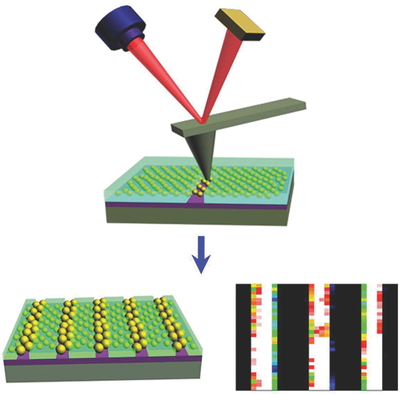_ Department 🔬 laboratory (propagation and expansion of nanochips)
Nano laboratory on a chip (LOC) is a nano electrical device that consists of one or more laboratory agents on a nano chip with dimensions of several nanometers.
Researcher and author: Dr. ( Afshin Rashid)
Note: Using synthetic nano sensors and LOC nanochips, it is possible to identify very small amounts of chemical contamination or virus and bacteria in agricultural, food and medical systems. Also, among these sensors, we can mention a sensor based on nanowires that detects damage caused by radiation in the medical and laboratory industries.
These nanosensors are placed in blood cells. Also, Lab on a chip (LOC) is a device that consists of one or more laboratory operators on a chip with dimensions of a few millimeters or square centimeters and deals with very small volumes of liquids. And it can give us a lot of desired information from one sample.
These synthetic nanosensors and gas nanosensors are prepared by attaching special particles to the ends of carbon nanotubes and calculating the vibration frequency in the presence or absence of particles. These nanosensors are often used to detect and control chemical reactions by nanoparticles. The construction of gas nanosensors has been one of the most important topics in recent decades due to their many applications in various food, chemical, health, military and even space research industries. Leakage of deadly gases is one of the daily dangers of industrial life. Unfortunately, the alarm systems in the industry often fail to detect such gas leaks very late. Examples of this type of sensors are made of single-layer nanotubes with a thickness of about one nanometer and can absorb toxic gas molecules.
They are also able to detect a small number of molecules of deadly gases in the environment. Such gas sensors have been successfully tested to identify ammonia and nitrogen dioxide gases, which are among the toxic gases. These sensors will be used to detect bio-chemical war gases, air pollutants and even organic molecules in space .
Conclusion :
Using synthetic nanosensors and LOC nanochips, it is possible to identify very small amounts of chemical pollution or virus and bacteria in agricultural, food and medical systems. Also, among these sensors, we can mention a sensor based on nanowires that detects damage caused by radiation in the medical and laboratory industries.
Researcher and author: Dr. ( Afshin Rashid)
Specialized doctorate in nano-microelectronics





